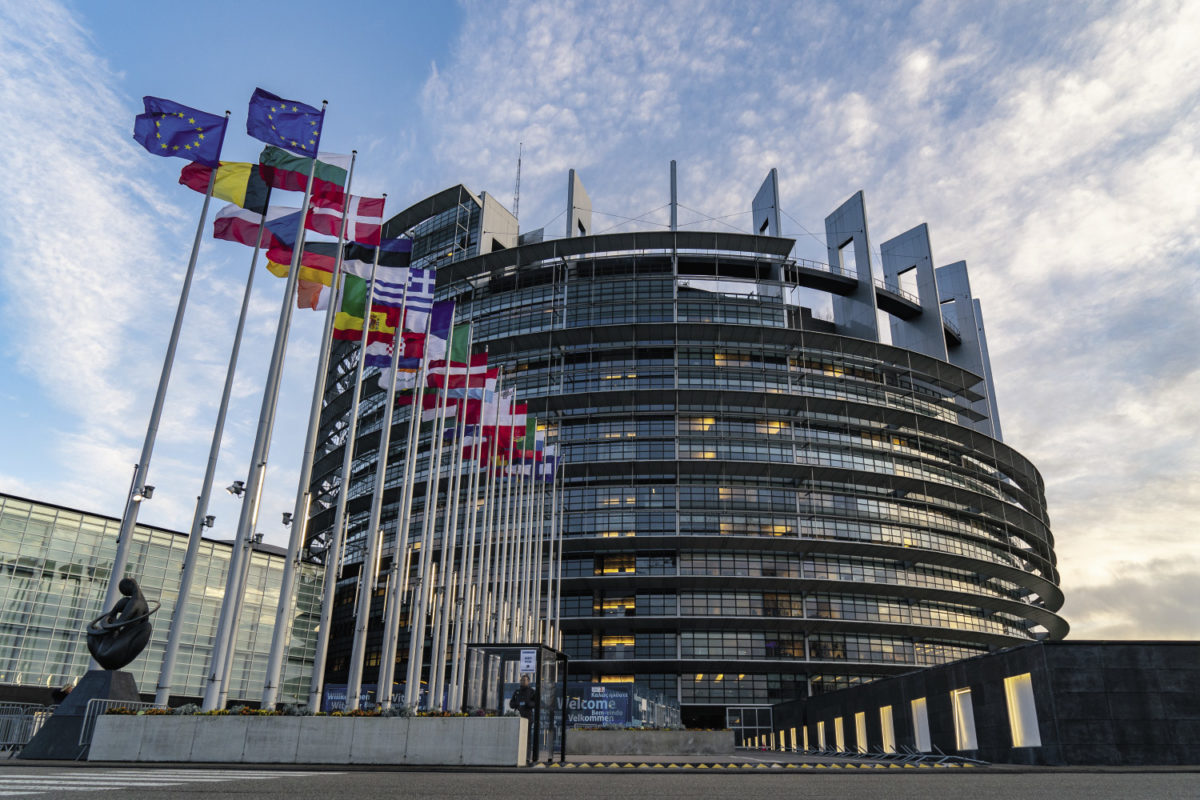 The EU Climate Law will make net zero emissions by 2050 legally binding. It has also proposed upping 2030 targets to 50% emissions reduction or more. Nancy Saich, chief climate change expert at the European Investment Bank (EIB), says this marks the first time a major economy has released plans in line with the recommendations of the Intergovernmental Panel on Climate Change (IPCCC).
The EU Climate Law will make net zero emissions by 2050 legally binding. It has also proposed upping 2030 targets to 50% emissions reduction or more. Nancy Saich, chief climate change expert at the European Investment Bank (EIB), says this marks the first time a major economy has released plans in line with the recommendations of the Intergovernmental Panel on Climate Change (IPCCC).
There are many quibbles to be made about the Climate Law, and the extent to which it will be implemented by member states. At the same time, it is predominantly about providing guidance and guidelines. “The EU Climate Law is more about the extent to which the EU can lead and influence the rest of the world,” says Sean Kidney, chief executive of the Climate Bonds Initiative.
Green finance
What makes the EU Climate Law special is its position in a wider framework that includes the EU Sustainable Taxonomy, Green Bond Standards and Sustainable Finance Action Plan. Central to the success of the Green New Deal is the EU’s commitment to €1 trillion in funding over 10 years. While the union prepares to put 30% of its budget in to climate-friendly investment, and funds are expected to flow from Just Transition funds, Invest EU and carbon trading, much of the finance required for the transition to a green future will need to come from the private sector.
Green finance is conceptually divided into two elements: greening finance itself, and then using finance for green projects. The goal has been to set out a direction of travel so that investors can understand the risks of action and inaction and, ultimately, realign flows of global finance toward environmental goals. By setting out such a direction, the EU is sending a clear signal that policy will support the transition to a low carbon future, and investors need to respond accordingly.
Simon Tilling, head of environment at law firm Burges Salmon, makes it clear that in his view, green finance is really simply finance realigned, while Richard Burrett, chief sustainability officer at Earth Capital explains that it means “finance that makes a positive impact in terms of greening the economy.” What it is about is the provision of guidance, and labels that enable the identification of risk.
Investors are looking to the future to understand how their assets and liabilities match risk. Green or climate risk really falls into two key areas – physical risk and transition risk, which is created by policy frameworks enabling the transition to a low carbon future. Ryan McNelly, managing director Portfolio Valuation practice at Duff & Phelps, says that “projects don’t get off the ground, as there are more profitable polluting projects with higher returns.”
What the implementation of the Green New Deal will mean is a reassessment of what constitutes a high-risk investment, from both a physical risk and policy risk perspective, and what impact that will have on return. Goldman Sachs already called the death of thermal coal back in 2013 and the economics of solar and wind versus oil and gas are beginning to look better in the majority of jurisdictions.
What the EU’s approach does is provide a more standardized framework for investors to assess risk, through Green Bond Standards, the EU Sustainable Taxonomy and disclosure rules. While some elements are still being debated, identifying risk in a comparable and measurable way is a key step to transformation, as it is the combination of risk and potential return which has always driven investment decision making. As Tilling, says, “If you understand risk and the direction of travel then you understand what looks like low risk isn’t. You then channel money into transition and low carbon energy. It’s not about doing good but positioning yourself for success in the longer term.”
Richard Burrett of Earth Capital, says the trigger for growth will be clearer long term policy that can’t be changed at the next budget. At present, several member states are saying they won’t make the 2050 targets, let alone increased 2030 goals. As Kidney points out, however, this will change if it is “pushed by the weight of money.”
Incentive to innovate
What does not get financed is at least as important as what does. “It is important that we focus not only on a green taxonomy but also on a brown taxonomy,” says Ulrich Volz, the director of the Centre for Sustainable Finance at SOAS University of London. “Importantly, we need a brown penalizing factor to make the financing of environmentally harmful activities (prohibitively) expensive.” Perhaps even more important is a degree of flexibility in the approach, ensuring tighter standards as technology and processes improve. There is a danger that agreeing a framework today may result in a minimum standards approach. As Tilling says, “the problem is whenever you fix something in a market that needs to innovate, you fix things at a point in time and remove the incentive to innovate.”
For solar, the EU agenda provides an enormous push. According to Alessandro Boschi, head of renewables at the EIB, even before the new proposals solar capacity was expected to triple from 2015 levels, and under the Green New Deal more than 60% of the electricity produced will need to come from renewables by 2030. Going even further, under the newly released proposals for the EU Sustainable Taxonomy there is a clear limit on life cycle emissions from power generation of 262g CO2 per kWh. That is a strong statement of intent to move away from fossil fuels.
The key for low carbon solutions and the taxonomy, according to Saich, is the call to “do no significant harm” to the environment and adaptation. While the solar industry is clearly a contributor to lower emissions, it’s vital that the sector learns to minimize land use and increase efficiency, as well as build climate-resilience into its systems. Boschi believes that there are still significant margins both for cost reductions and technology improvement in solar, which will allow a reduction in land occupation as well as the deployment of building integrated solutions.
The solar industry needs to recognize that with the call to do no harm comes a requirement for more circular economy business models. Common materials that are used for building solar panels and systems include steel, concrete, glass, plastic, aluminium and copper. Critical raw materials and precious metals are also used in the manufacturing of typical panels and systems, such as silicon and silver. Most of these materials are gradually being substituted and/or replaced by alternatives.
Mercè Labordena, senior policy advisor, SolarPowerEurope, says that in parallel, the amount of critical materials recycled and reused will increase thanks to improved processes. As the solar industry becomes more circular, it will increasingly appeal not only to investors looking for renewable energy opportunities, but also those looking for circular economy models with low usage of primary resources.
Ongoing battle
Labordena says that while the release of the new law is positive, the battle is not yet over. Member states need to have concrete National Energy and Climate Plans in order to support implementation. She sees solar as having a critical role not only in the direct electrification of the economy, but also indirectly, through green hydrogen. Some industry sectors will be difficult to decarbonize except through hydrogen and currently that is expensive to produce. “Solar power is quickly becoming the cheapest source of power generation and therefore solar is poised for a ‘solar-to-hydrogen’ revolution that could unlock significant benefits for society,” she says. The new law and Green New Deal make solar relatively risk free from a policy perspective. Even if the new 2030 targets are not yet agreed, they make clear where the EU is taking the bloc. Kidney says that given the low forward interest rate projections in the EU, the capex cost makes large solar plants look like life insurance annuities, meaning they’re already appealing to long term investors such as pension funds. The industry needs to think about how to package large scale solar in a way that appeals to such investors. That way, he adds, they “become the perfect investment to pop into the portfolio.”
There is no question that all sectors are going to suffer over the coming months. As the markets settle however, there will be a need for economic stimulus. If the EU, and other governments, choose to do this through green stimulus, we might just see a step-change in the low carbon transition. As Kate Levick, program lead for sustainable finance at E3G, says in terms of the direction of travel, “it feels like the genie is out of the bottle. It’s not possible to go backwards, or even stand still. The momentum is there.”
Felicia Jackson
This content is protected by copyright and may not be reused. If you want to cooperate with us and would like to reuse some of our content, please contact: editors@pv-magazine.com.
